A block of mass m is placed on a wedge of mass M and a force F is acting on its as shown . If all surfaces are smooth , find the force F such that, there is no relative motion between m and M.
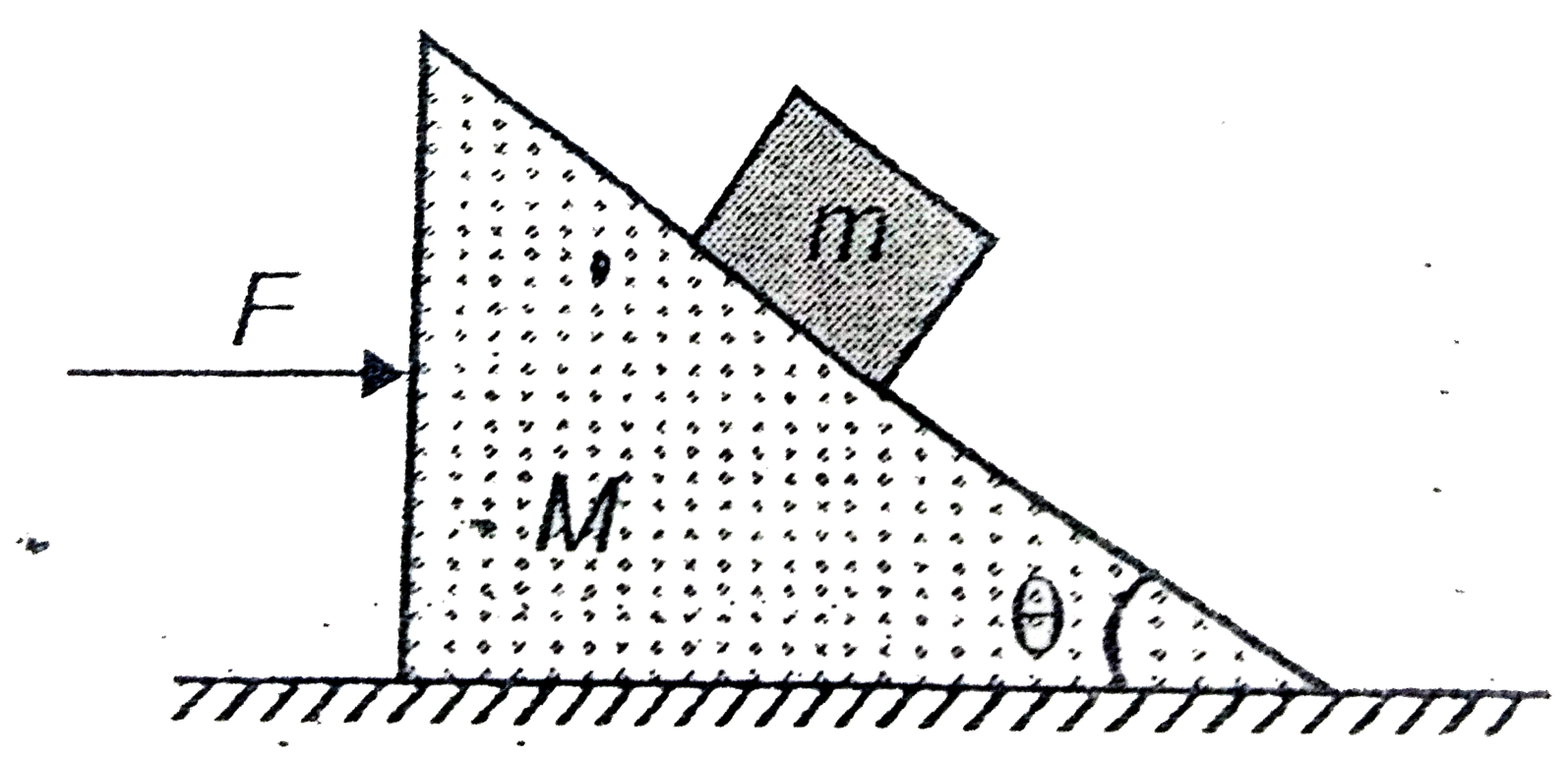
The force acting on the bodies m and M are shown in the figure along with free body diagrams of mass m and M. As the two bodies move together, we can find the acceleration of system towards right directly as
a=Fm+M

Here the condition is, the small block of mass .m. should remain at rest on the incline surface of the wedge block. Look at the FBD of m, the force acting on it towards left is .ma. . It is the pseudo force on it as its reference frame is the wedge. As wedge is moving with an acceleration, we consider m relative to it. Now with respect to wedge, block m is at rest or in equilibrium, we can balance all the forces along the tendency of motion of body (i.e., inclined plane)and perpendicular to it shown in FBD of it.
For m to be at rest, from FBD of m, along the plane
mgsinθ=macosθora=gtanθorFm+M=gtanθ,F=(m+M)gtanθ
Similar Questions
A block of mass m is placed at rest on a smooth wedge of mass M placed at rest on a smooth horizontal surface. As the system is released
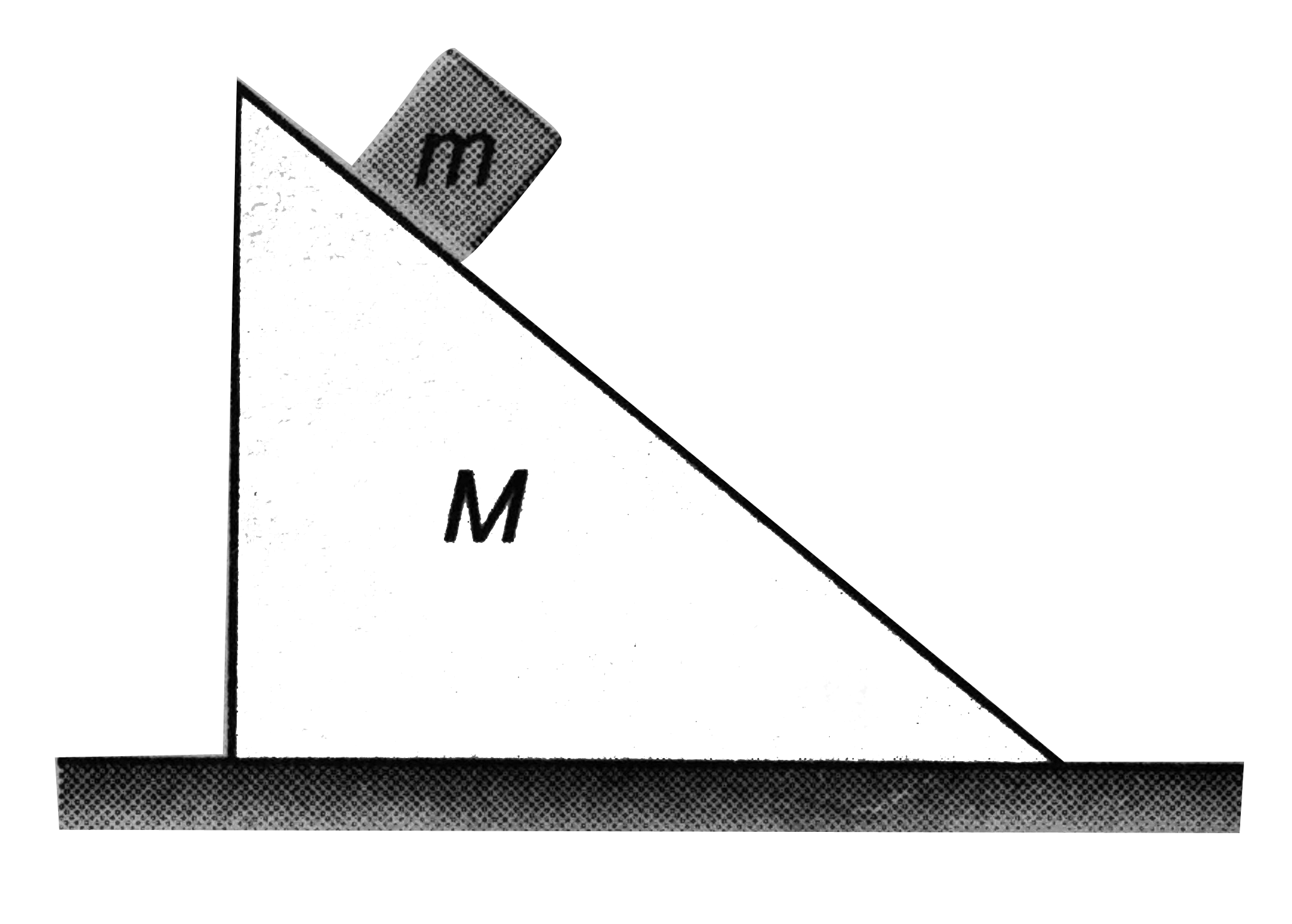
View SolutionA smooth block of mass m is held stationary on a smooth wedge of mass M and inclination θ as shown in figure .If the system is released from rest , then the normal reaction between the block and the wedge is

View SolutionA block of mass m is placed on a smooth wedge of mass M, as shown in the figure . Just after placiing block m over wedge M.
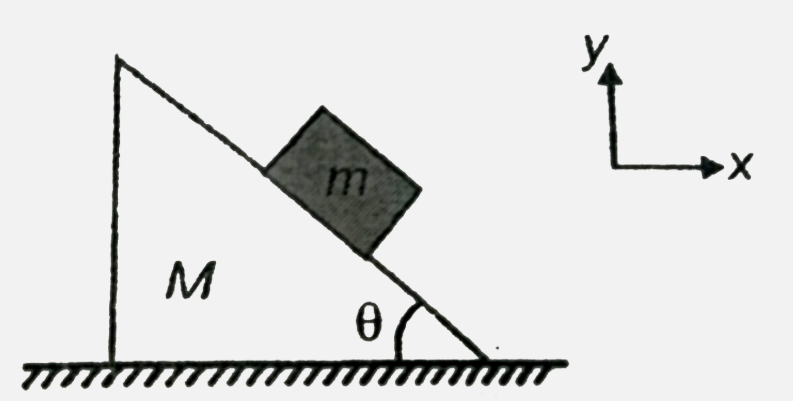
View SolutionA block of mass m is placed on a triangular block of mass M(M=2m) , as shown. All surfaces are smooth. Calculate the velocity of triangular block when the smaller block reaches at bottom.
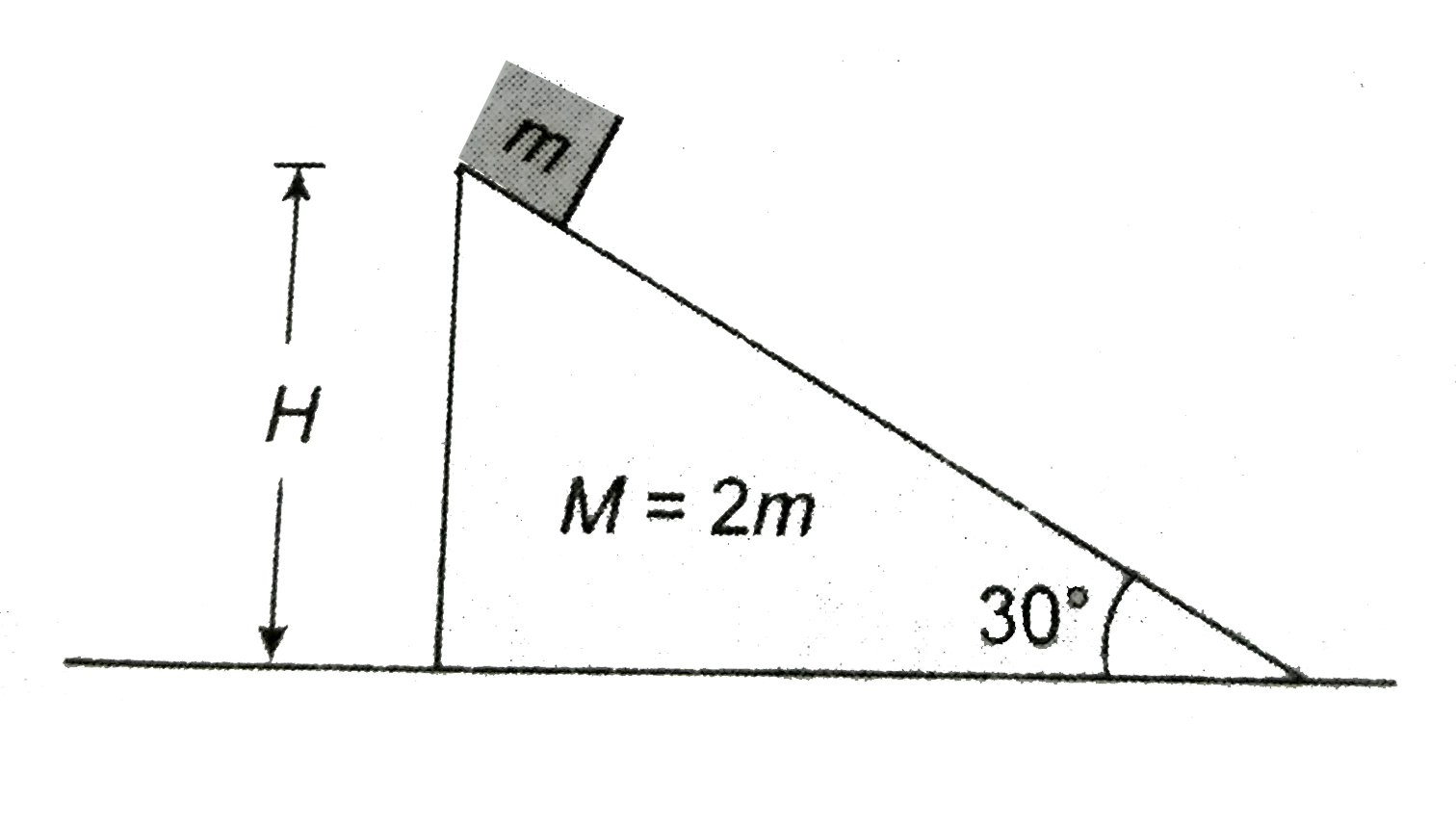
View SolutionAll the surfaces are smooth as shown in figure. The acceleration of mass m relative to wedge is :
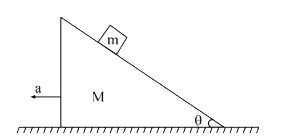
View SolutionA block of mass m, is kept on a wedge of mass M, as shown in figure such that mass m remains stationary w.r.t. wedge. The magnitude of force P is
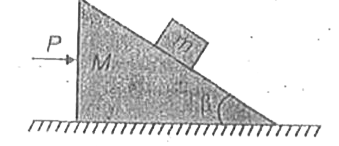
View SolutionTwo smooth wedges of equal mass m are placed as shown in figure. All surfaces are smooth. Find the velocities of A & B when A hits the ground.
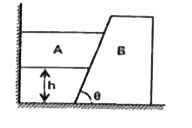
View SolutionA block of mass m rests on a stationary wedge of mass M. The wedge can slide freely on a smooth horizontal surface as shown in figure. If the block starts from rest

View SolutionA block of mass m is placed on another block of mass M lying on a smooth horizontal surface as shown in the figure. The co-efficient of friction between the blocks is μ. Find the maximum horizontal force F (in Newton) that can be applied to the block M so that the blocks together with same acceleration? (M=3kg,m=2kg,μ=0.1,g=10m/s2)
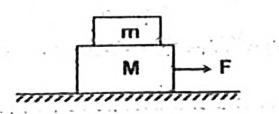
View SolutionA block of mass m is placed on the block of mass M as shown in figure. The horizontal force →F acts on M during time interval t. If the horizontal surface is smooth, assuming no relative sliding between the blocks, find the
a. work done by friction on the blocks
b. work done by →F on the lower block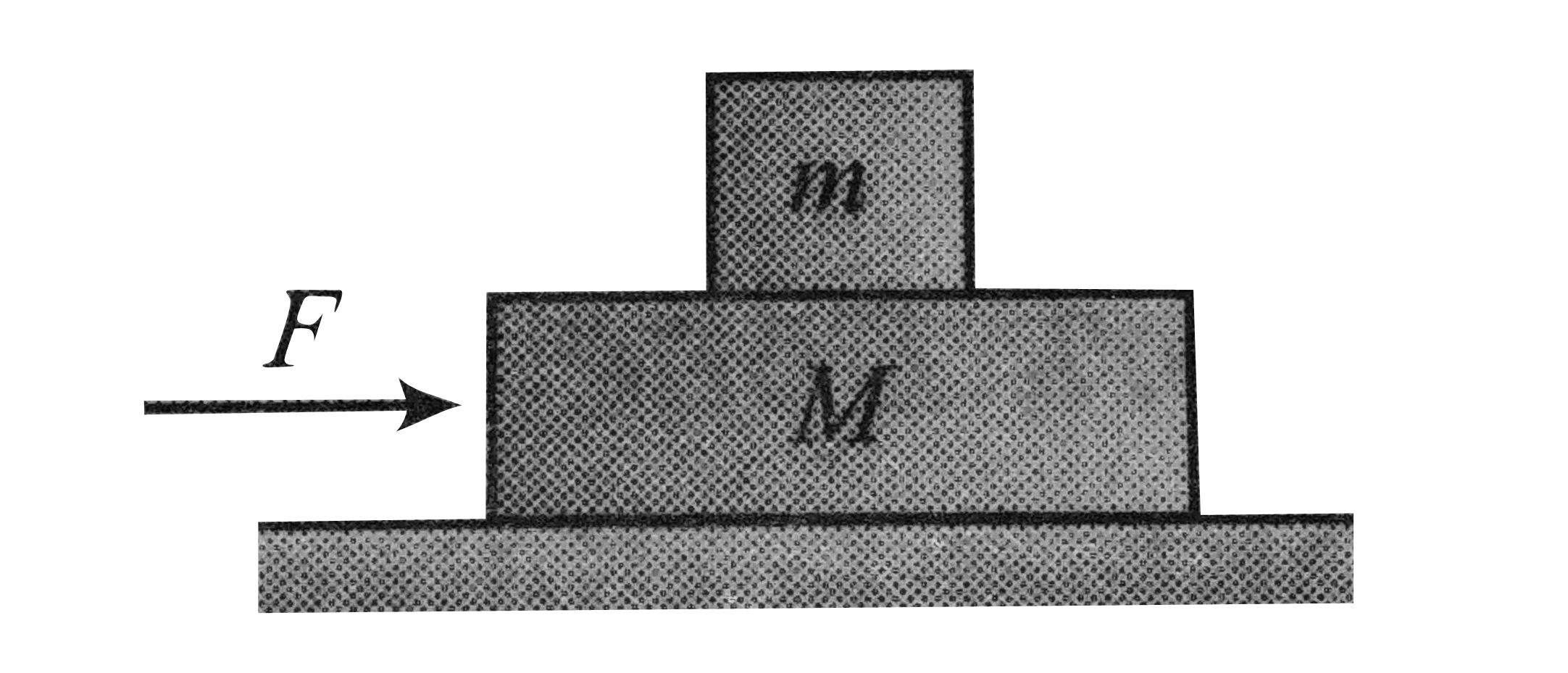
View Solution
